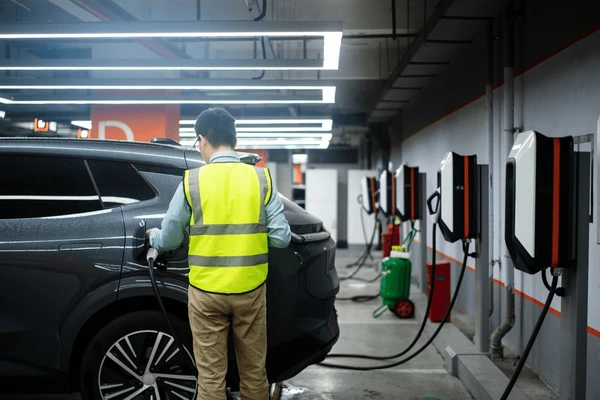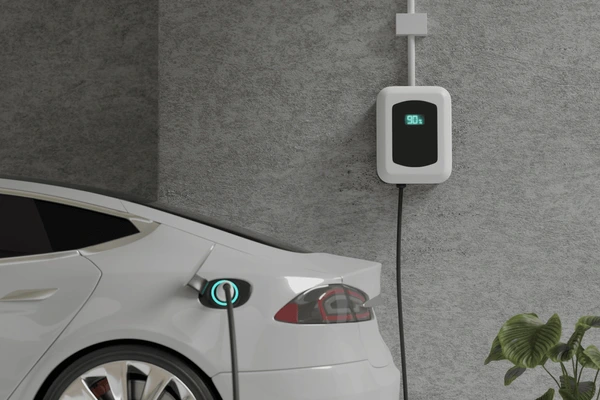Electric vehicles have taken India by storm — and for good reason. They’re clean, smart, and cost-effective. But as EVs become more common, one concern keeps coming up — safety. This EV safety guide is your go-to resource for understanding EV fire risks and the real-world solutions that make electric mobility safer than ever. Whether you already own an EV or plan to buy one in 2025, this guide will help you drive smarter, safer, and with confidence.
1. Understanding EV Fire Risks
While electric vehicles are designed with strict safety standards, EV fire risks usually stem from battery issues or improper handling. Lithium-ion batteries — the powerhouse of EVs — are sensitive to heat and damage. When overheated or punctured, they can enter a “thermal runaway,” leading to fire. However, such incidents are rare compared to petrol or diesel car fires. With better engineering, awareness, and usage practices, these risks can be minimized significantly.
Common Causes of EV Fires
The main triggers of EV fires are overcharging, physical damage, or manufacturing defects in battery cells. Environmental factors like extreme heat or flooding can also increase risk. Improper charging cables or poor-quality chargers are another hidden danger many overlook. Fortunately, manufacturers now include Battery Management Systems (BMS) that automatically prevent overcharging and overheating, reducing such incidents drastically.
2. Preventing EV Fires: What You Can Do
When it comes to EV safety, prevention is always better than cure. Modern EVs are equipped with multiple safety layers, but your usage habits play an equally vital role.
Smart Charging Habits
Always use manufacturer-approved chargers and cables. Avoid leaving your EV charging overnight or unattended in confined areas. Regularly check your charger and socket for signs of wear, heat, or sparks. Try to charge during cooler hours — especially in summer — to maintain battery health. These small steps go a long way in maintaining a safer EV experience.
Regular Maintenance & Monitoring
Schedule periodic inspections at authorized service centers. Technicians can identify early signs of battery wear or imbalance. Many EVs now feature apps that allow real-time monitoring of battery temperature, charging speed, and efficiency — helping owners detect anomalies early and prevent bigger issues.
3. How Manufacturers Ensure EV Safety
The automotive industry has invested heavily in making EVs safer from the ground up. Battery packs are now smarter, stronger, and more efficient than ever.
Battery Management System (BMS)
A BMS acts like the EV’s nervous system. It tracks voltage, current, and temperature for each battery cell and balances charging automatically. This system prevents overcharging, overheating, or deep discharge — three major culprits behind battery-related fires.
Thermal Management & Fireproof Materials
Today’s EVs feature liquid cooling systems and fire-retardant materials that control heat even under heavy load. Battery compartments are sealed with fire-resistant barriers to prevent fire from spreading across modules. These innovations make modern EVs far less prone to fire than older-generation models.
4. Safe Charging Infrastructure in India
The rapid growth of India’s EV ecosystem is supported by improved charging infrastructure. With hundreds of new stations and safety regulations in place, EV charging is becoming as routine as fueling a car.
Public Charging Safety
Certified public chargers undergo stringent checks for insulation, grounding, and surge protection. Always plug into BIS-certified or OEM-approved chargers only. If you notice exposed wires, overheating cables, or loose plugs — report them immediately.
Home Charging Safety
If you charge at home, install a dedicated 15A socket or Level 2 wall charger with circuit breakers and grounding. Avoid using regular household extension cords, as they can overheat. It’s also wise to install a smoke detector or surge protector in your charging area for added peace of mind.
5. Emergency Response and Safety Tips
Even with all precautions, it’s important to be prepared for emergencies. Knowing how to act quickly can prevent accidents from escalating.

Immediate Steps During an EV Fire
If you notice smoke, sparks, or a burning smell, stop charging immediately and move away from the vehicle. Keep a safe distance and call emergency services. Never attempt to open the battery casing or pour water on it — use a Class D fire extinguisher or sand if necessary.
Safety Features You Should Know
Modern EVs come equipped with auto shut-off mechanisms that cut power if a short circuit or crash is detected. Some even have thermal sensors that alert the driver if the battery temperature spikes. Familiarize yourself with these features — they’re your best defense during emergencies.
6. Government Regulations and Safety Standards
The Indian government has introduced strict standards to ensure EV safety from production to end-use.
AIS-038 and AIS-156 Norms
These are the official safety benchmarks for EV batteries and charging systems. They cover everything from shock protection to overcharge control, fire resistance, and temperature management. EVs that meet these standards undergo rigorous testing to minimize risk.
FAME II and EV Safety Subsidies
Under the FAME II scheme, manufacturers must comply with these safety norms to qualify for subsidies. This not only promotes safer EV designs but also helps consumers make more informed and secure purchases.
7. New-Age Safety Innovations in 2025
The latest generation of electric vehicles is packed with intelligent safety technologies.
AI-Powered Fire Detection Systems
Advanced EVs now feature AI-based battery monitoring that predicts potential faults before they happen. These systems can isolate faulty cells and alert users instantly, significantly reducing the chances of a fire.
Fireproof and Recyclable Batteries
Companies like Tata, Ola, and Hyundai are working on solid-state and LFP (Lithium Iron Phosphate) batteries, known for higher thermal stability. These batteries don’t catch fire easily and are more eco-friendly — a win for both safety and sustainability.
8. Buyer’s Safety Checklist: What to Look for Before Buying an EV
| Safety Feature | Why It Matters | What to Check |
|---|---|---|
| BMS & Cooling | Prevents overheating and fire risk | Ensure liquid cooling is included |
| Battery Certification | Ensures quality & safety | Check AIS-156 compliance |
| Fast Charging Support | Reduces charging stress | Verify if DC fast charging is available |
| Crash Safety Rating | Confirms body protection | Prefer 4+ star rated EVs |
| Warranty | Covers battery & safety issues | Look for 8-year or 1,60,000 km coverage |
9. Challenges in EV Safety
While EVs are advancing quickly, a few challenges remain. The main concern is the limited charging infrastructure in smaller towns, which can lead owners to use unsafe charging setups. Additionally, battery recycling and disposal systems are still evolving, raising long-term environmental and safety issues. There’s also a knowledge gap among first-time EV users — many are unaware of best practices for safe charging and maintenance, which can lead to avoidable accidents or reduced battery life.
10. Advantages of Modern EV Safety Systems
Today’s electric vehicles are safer than ever, thanks to smart technologies and better manufacturing practices. AI-driven fire detection, thermal monitoring, and modular battery designs have made EVs far more reliable. Improved crash structures and automatic power isolation systems further reduce risks. Plus, eco-friendly solid-state batteries are reshaping the future of electric mobility by offering greater stability and less chance of fire. Together, these advancements make EVs not just efficient — but incredibly safe for Indian roads.
11. Final Takeaway
Safety is at the heart of the electric mobility revolution. As this EV safety guide shows, understanding and applying basic safety practices can drastically reduce fire risks. Choose EVs with strong safety ratings, certified batteries, and trusted charging systems. The future of driving is electric — and safe.
Stay charged, stay aware, and explore more expert EV insights, guides, and reviews at EV Insights.
Latest Posts
- Best Electric Scooters for Women in India 2025 – Stylish, Smart & Sustainable
- Government’s Powerful EV Infrastructure Plan 2025–26: India’s Next Big Leap in Electric Mobility
- BYD EV Cars India 2025 – Powerful Features, Review & Cost Guide
- EV Battery Life Explained: Smart Tips to Improve Lifespan
- EV Safety Guide 2025: Understanding Fire Risks & Effective Solutions



